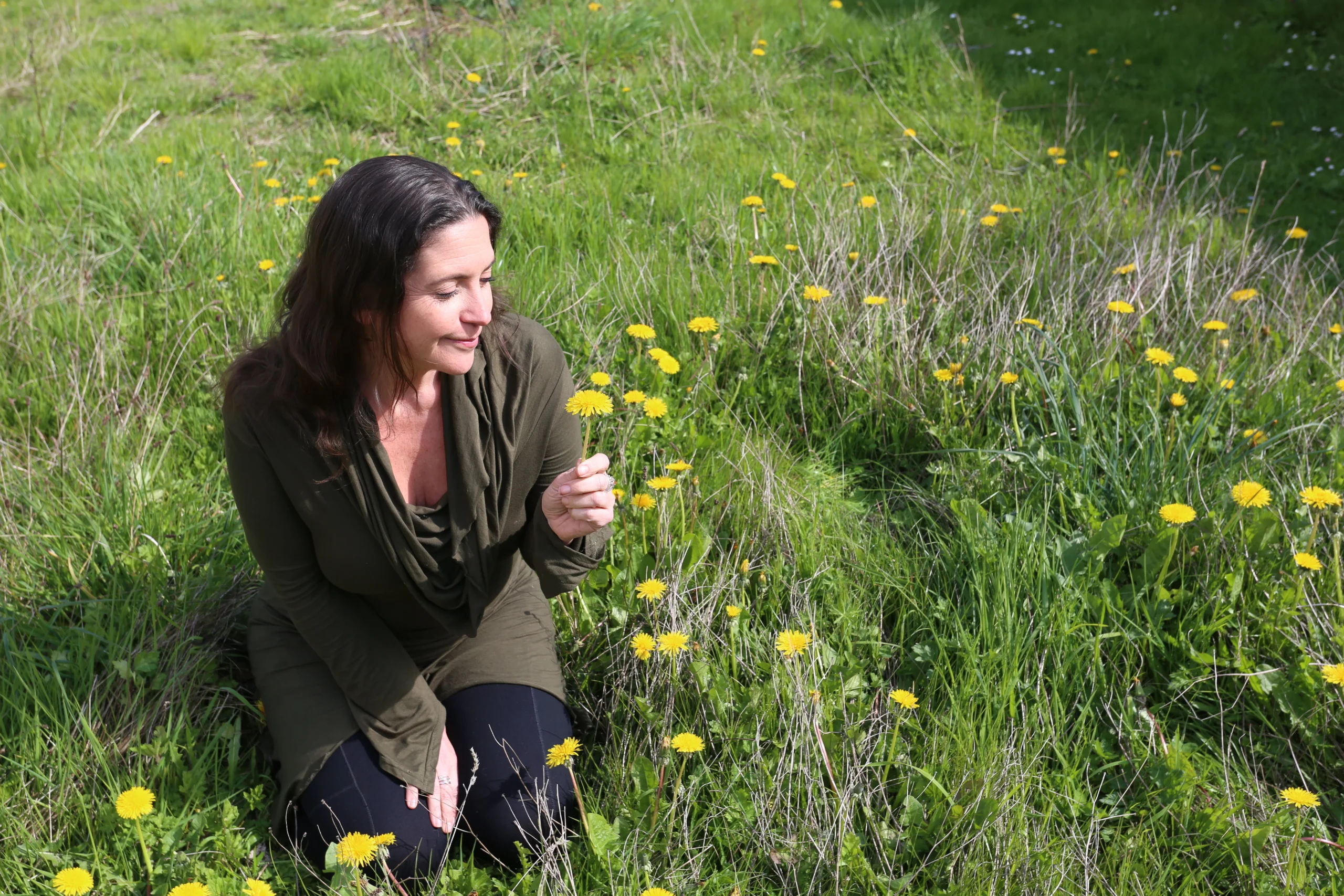In an age where the distance between us and our food sources seems to grow with each passing year, there is a rekindled interest in reconnecting with nature’s bounty. The concept of growing your own food and foraging for wild edibles has gained traction, not only for its environmental benefits but also for the profound connection it fosters between individuals and the earth. Additionally, there’s a growing awareness of the medicinal properties of plants that have been overlooked for centuries. In this article, we’ll delve into the art of cultivating your own vegan organic garden, explore the delights of foraging, and uncover the medicinal benefits of nettles, dandelion, chickweed, and mallow and other early spring plants.
A large part of the way i grow is looking at what nature provides naturally such as the “weeds”. These are some of my favourite foods to work with and you don’t need to do anything to grow them. The earth provided the plant as a gift to you. I also like to buy plants that i might forage and grow them in my garden so i know they are grown in a clean environment and are also on hand when i want to work with them or show others how to use them.
One of the keys to having a good relationship with the plants you grow or that are grow in your environment is to remember to always give back to the earth. It can be just in an expression of gratitude, or in a beautiful natural fertiliser.
Some of the amazing gifts that the earth has given us in our Veganic Garden this spring are: Nettles, dandelion, chickweed, mallow, sweet violets, wild garlic, and three-cornered leeks. These are part of nature’s pharmacy, offering a myriad of health benefits and are some of the early ones to come up. In the tapestry of nature’s offerings, certain plants stand out for their exceptional medicinal and culinary properties.
Sweet Violets (Viola odorata):
Medicinal Properties:
Respiratory Support: Sweet violets have traditionally been used to alleviate respiratory ailments such as coughs, colds, and bronchitis. Their soothing properties help to ease inflammation and is an expectorant.
Skin Care: Infusions or poultices made from sweet violets are prized for their ability to soothe irritated skin conditions like eczema and dermatitis. They possess mild anti-inflammatory and emollient properties.
Antioxidant Rich: Sweet violets are rich in antioxidants, including vitamins A and C, which help protect cells from damage caused by free radicals and support overall health.
Culinary Uses:
Edible Flowers: Sweet violets add a delicate floral flavor to salads, desserts, and beverages. Their vibrant purple petals are not only visually appealing but also impart a subtle sweetness to dishes.
Floral Syrups and Jams: Infusing sweet violets into syrups or making jams showcases their fragrant essence, creating delightful toppings for pancakes, waffles, or toast.
Herbal Teas: Dried violet flowers can be brewed into a soothing herbal tea, offering a gentle way to enjoy their medicinal benefits while indulging in a moment of relaxation.
Wild Garlic (Allium ursinum):
Medicinal Properties:
Cardiovascular Health: Wild garlic contains compounds that may help lower blood pressure and cholesterol levels, reducing the risk of heart disease and promoting overall cardiovascular health.
Antimicrobial Action: The allicin compound found in wild garlic exhibits potent antimicrobial properties, making it effective against bacterial, fungal, and viral infections.
Digestive Aid: Consuming wild garlic can stimulate digestion and alleviate symptoms of indigestion, bloating, and gas. It may also help maintain a healthy balance of gut flora.
Culinary Uses:
Aromatic Herb: Wild garlic imparts a pungent garlic flavor to dishes, making it a popular addition to soups, stews, sauces, and pesto.
Flavorful Garnish: Fresh wild garlic leaves can be finely chopped and used as a flavorful garnish for salads, pasta, risottos, or savory pastries.
Pickled or Fermented: Preserving wild garlic through pickling or fermentation preserves its unique flavor profile, offering a tangy condiment to accompany a variety of dishes.
Three-Cornered Leeks (Allium triquetrum):
Medicinal Properties:
Detoxification: Three-cornered leeks are believed to have mild diuretic properties, promoting the elimination of toxins from the body and supporting kidney function.
Antioxidant Content: Like other members of the allium family, three-cornered leeks contain antioxidants that help combat oxidative stress and protect against chronic diseases.
Anti-inflammatory Effects: Consuming three-cornered leeks may help reduce inflammation in the body, offering relief from conditions such as arthritis and joint pain.
Culinary Uses:
Flavourful Addition: Three-cornered leeks add a delicate onion and garlic flavor to dishes, enhancing the taste of soups, salads, stir-fries, and savory bakes.
Wild Herb Pesto: Blend fresh three-cornered leek leaves with nuts, olive oil, and seasonings to create a flavorful pesto sauce that can be enjoyed with pasta, bread, or grilled vegetables.
Infused Vinegar or Oil: Infusing vinegar or oil with three-cornered leeks imparts their subtle flavor, creating versatile condiments for dressings, marinades, or dipping sauces.
Nettles (Urtica dioica):
Medicinal Properties:
Nutrient-Rich: Nettles are a nutritional powerhouse, packed with vitamins (A, C, K), minerals (iron, calcium, magnesium), and antioxidants, making them a potent tonic for overall health and vitality.
Allergy Relief: Consuming nettles may alleviate symptoms of seasonal allergies, thanks to their natural antihistamine properties that help reduce inflammation and relieve nasal congestion and itching.
Joint Support: Nettles are traditionally used to ease joint pain and inflammation associated with conditions like arthritis, thanks to their anti-inflammatory compounds and ability to support healthy circulation.
Culinary Uses:
Nutritious Greens: Nettles can be steamed, sautéed, or blended into soups and sauces, providing a rich, earthy flavor reminiscent of spinach with a nutritional punch.
Herbal Infusions: Nettle tea is a popular herbal remedy known for its detoxifying and tonic properties. It can be enjoyed on its own or blended with other herbs for added flavor and benefits.
Pesto and Soups: Fresh nettle leaves make a vibrant addition to pesto, imparting a unique depth of flavor, while nettle soup offers a hearty and nourishing meal, especially in the colder months.
Chickweed (Stellaria media):
Medicinal Properties:
Skin Soothing: Chickweed is prized for its cooling and soothing properties, making it an effective remedy for skin irritations, rashes, eczema, and minor burns. It helps reduce inflammation and promote healing.
Digestive Aid: Consuming chickweed may support digestive health by soothing inflammation in the gastrointestinal tract, relieving symptoms of indigestion, bloating, and gastric discomfort.
Nutrient Boost: Chickweed is rich in vitamins (A, C, B-complex) and minerals (calcium, magnesium, potassium), offering a nutritional boost that supports overall wellness and vitality.
Culinary Uses:
Fresh Salads: Young chickweed leaves add a mild, slightly nutty flavor to salads, lending a crunchy texture and a burst of freshness.
Infused Vinegars: Infusing apple cider vinegar with chickweed creates a tangy and nutritious condiment that can be used in dressings, marinades, or consumed as a health tonic.
Tea Blends: Chickweed can be brewed into a mild and refreshing herbal tea, either on its own or blended with other herbs for added flavour and benefits.
Dandelion (Taraxacum officinale):
Medicinal Properties:
Liver Support: Dandelion is renowned for its liver-cleansing properties, aiding in detoxification and promoting optimal liver function. It stimulates bile production, facilitating the breakdown of fats and aiding digestion.
Diuretic Action: Dandelion acts as a gentle diuretic, promoting the elimination of excess fluids and toxins from the body, making it beneficial for conditions like water retention, bloating, and urinary tract health.
Antioxidant Rich: Dandelion is rich in antioxidants, including vitamins A and C, which help neutralize free radicals, protect cells from damage, and support overall immune function.
Culinary Uses:
Edible Greens: Dandelion leaves can be eaten raw in salads or cooked like spinach, offering a slightly bitter flavor profile that pairs well with tangy dressings or savory dishes.
Root Coffee Substitute: Roasted dandelion roots can be ground and brewed into a coffee-like beverage, offering a rich, nutty flavor with the added benefits of liver support and detoxification.
Floral Fritters: Dandelion flowers can be dipped in batter and fried to make delicate and flavorful fritters, perfect for enjoying as a snack or appetizer.
In conclusion, the journey of growing your own food, foraging for wild edibles, and harnessing the medicinal benefits of plants is a deeply rewarding endeavour that connects us to the rhythms of nature. By embracing vegan organic principles and cultivating a deeper appreciation for the abundance of the natural world, we can nourish our bodies, minds, and spirits while treading lightly on the earth.

